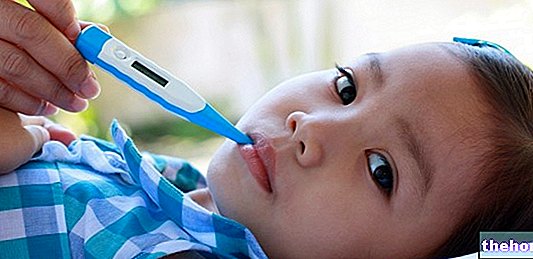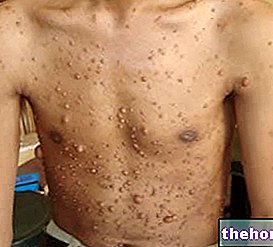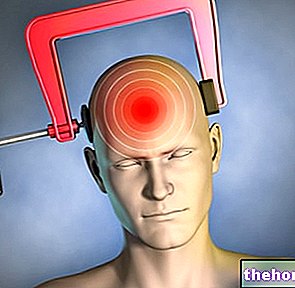Generality
Prosopagnosia, or prosopoagnosia, is a cognitive-perceptual deficit, which makes the individual concerned unable to recognize the faces of known people and, sometimes, even his own face, when he looks in the mirror or observes a photo of him.

Prosopagnosia can have serious repercussions on the patient's social sphere and can lead to the development of depression and social phobia.
There are various diagnostic tests to determine whether or not an individual suffers from prosopagnosia; a very common test consists in showing the alleged patient photos of famous people and asking him to recognize them.
Unfortunately, at the present time, there is no therapy that cures prosopagnosia.Patients, however, can remedy their disabilities by recognizing people by voice, clothing, hairstyle, etc.
What is prosopagnosia?
Prosopagnosia, or prosopoagnosia, is a severe cognitive-perceptual deficit, as a result of which the person concerned is unable to recognize the facial features of known people and, sometimes, even his own face, when he is in front of a mirror.
Prosopagnosia is a type of agnosia; to be precise, it is a "visual agnosia.
Brief review of what "agnosia" is
In medicine, agnosia is a generic term for a sensory, tactile, visual and / or acoustic discriminatory disorder. Individuals with agnosia may be unable to recognize and identify a given object, scent, shape, person, or living entity.
ORIGIN OF THE NAME
The term prosopagnosia derives from the "union of two Greek words, which are:"prosopon” (πρόσωπον) and "agnosia" (αγνωσία). The word "prosopon"Means" face ", while the word" agnosia "means" not knowing "or" not knowing ".
Therefore, the literal meaning of prosopagnosia is "not knowing the face", where by "not knowing" s "means" lack of recognition ".
Causes
Prosopagnosia can be a condition that an individual develops in the course of life, as a result of neurological damage; or, it can be a condition that an individual has from birth, despite a healthy brain, and which he maintains for the rest of his life.
In the first case, doctors speak of acquired prosopagnosia; in the second case, however, they speak of congenital prosopagnosia or developmental prosopagnosia.
ACQUIRED PROSOPAGNOSY
Neurological studies have shown that acquired prosopagnosia arises due to brain lesions affecting the lower portion of the occipital lobe, the fusiform gyrus and / or the anterior temporal cortex of the right cerebral hemisphere. to the perception of people's facial features, to the integration of information concerning the association of a known face to the name of the person to whom that face belongs, etc .; in other words, they serve to recognize people from their faces.
In most cases, acquired prosopagnosia results from brain injury following a posterior cerebral artery infarction or cerebral hemorrhage located in the inferomedial portion of the temporal occipital area of the brain.
More rarely, it can result from severe carbon monoxide poisoning, temporal lobectomy, severe encephalitis, brain tumor, right temporal lobe "cerebral atrophy, Parkinson's disease and Alzheimer's disease.
Without going into too much detail, it is important to point out that there are two subtypes of acquired prosopagnosia: acquired apperceptive prosopagnosia and acquired associative prosopagnosia.
Curiosity
In the past, doctors and neurologists believed that, in the "onset of acquired prosopagnosia, the affected brain hemisphere was of" relative importance. In other words, they believed that acquired prosopagnosia could appear both as a result of lesions of the right brain hemisphere and following lesions of the left cerebral hemisphere.
Today, after a long series of scientific studies, doctors and neurologists know that the right hemisphere, which plays a decisive role in the onset of acquired prosopagnosia. In fact, brain lesions affecting the left cerebral hemisphere (clearly lesions affecting the portion lower occipital lobe, the fusiform gyrus, etc.) alter the ability to recognize faces only in very few cases and are almost always associated with object agnosia.
CONGENITAL PROSOPAGNOSIA
The precise causes of congenital prosopagnosia are unclear. Certainly - given the importance, it is worth reiterating - those affected by it do not present any lesions of a neurological nature.
According to some experts, genetic and hereditary factors contribute to the onset of congenital prosopagnosia. However, other studies are needed to be able to state with absolute certainty what has just been declared.
Congenital prosopagnosia is little known, because the medical-scientific community discovered it only a few decades ago; previously, in fact, it was common opinion that the inability to recognize faces appeared exclusively as a result of brain injuries.
EPIDEMIOLOGY
Prosopagnosia is a rare condition in its acquired form and quite common in its congenital form.
From a numerical point of view, experts know very little about the spread of acquired prosopagnosia in the general population. On the contrary, of the diffusion of congenital prosopagnosia they know that the latter would affect, with different degrees of severity, one individual out of 50 (NB: these are sources to be confirmed); in other words, if what has just been said were true, in a country like United Kingdom there would be about 1.5 million individuals unable to recognize their own faces and those of acquaintances.
Symptoms, signs and complications
A person with prosopagnosia does not recognize any face, from their own to that of a close family member (eg: mother or father) or of a person with whom they interact on a daily basis (eg: schoolmate or work colleague).
On the individuals concerned, the inability to recognize faces, induced by prosopagnosia, has several consequences, including:
- Social phobia (or social anxiety disorder);
- Difficulty in establishing solid interpersonal relationships with relatives or friends;
- Difficulty in establishing new interpersonal relationships;
- Relationship problems in the school / work environment;
- Moments of depression, due to social relationship difficulties.
In its most severe forms, prosopagnosia can compromise: the ability to recognize facial expressions, the ability to estimate a person's age even roughly, the ability to determine an individual's sex, the ability to recognize oneself themselves in a photo, the ability to distinguish objects or animals and the ability to recognize a familiar place.
Curiosity
Those suffering from prosopagnosia are unable to appreciate films, television programs and theatrical performances, as they are unable to recognize the faces of actors or TV characters, even the most famous.
WHEN TO SEE THE DOCTOR?
An individual should go to their doctor for a consultation when they find that they have continual difficulties in recognizing the faces of known people.
ASSOCIATED CONDITIONS
It is a fact that there is an "association" between prosopagnosia and certain conditions, including: autism spectrum disorders, Turner syndrome and Williams syndrome.
Currently, the point of connection between the aforementioned conditions and the inability to recognize the faces of familiar people remains to be understood and is being studied.
MYTHS TO BE DISSOLVED
Prosopagnosia is not related to memory problems, vision loss or problems and learning difficulties.
Diagnosis
To correctly diagnose prosopagnosia requires the intervention of a neuropsychiatrist and the use of a series of tests. This series of tests includes:
- Show the alleged patient photos of famous people and ask him to recognize them;
- Show the alleged patient photos of unknown faces and try to make him memorize them;
- Show the alleged patient photographs of different faces and ask him to indicate differences and similarities;
- Show the alleged patient images of faces and ask him to describe their expression, gender (male or female) or most likely age.
Therapy
Currently, there is no specific treatment that can cure prosopagnosia, whether the latter has an acquired nature or has a congenital nature.
According to experts, to represent a positive turning point in the therapeutic field - especially as regards congenital prosopagnosia - could be the discovery of the triggering causes and the precise neurological mechanisms that regulate the recognition of faces.
ARE THERE ANY REMEDIES? COMPENSATORY STRATEGIES
Despite the lack of specific therapy, an individual with prosopagnosia can stem the condition that afflicts him by resorting to remedies that can be defined with the term compensatory strategies.
The most common compensatory strategies adopted in case of prosopagnosia consist of:
- Recognize a person by their voice;
- Recognize a person by the haircut;
- Recognize a person from clothing;
- Recognize a person by the way they gesticulate or walk.
As can be understood, the methods of recognition listed above can be unsuccessful, when people who relate to a patient of prosopagnosia change their hairstyle, change their voice as a result of age, change the style of clothing, etc.
Nonetheless, however, for many patients, compensatory strategies are very useful and allow them to live better interpersonal relationships.
Prognosis
Being a chronic and incurable condition, prosopagnosia has a negative prognosis.
Despite this, with the necessary countermeasures and the right precautions, those suffering from prosopagnosia can still lead a normal and satisfying life.




























